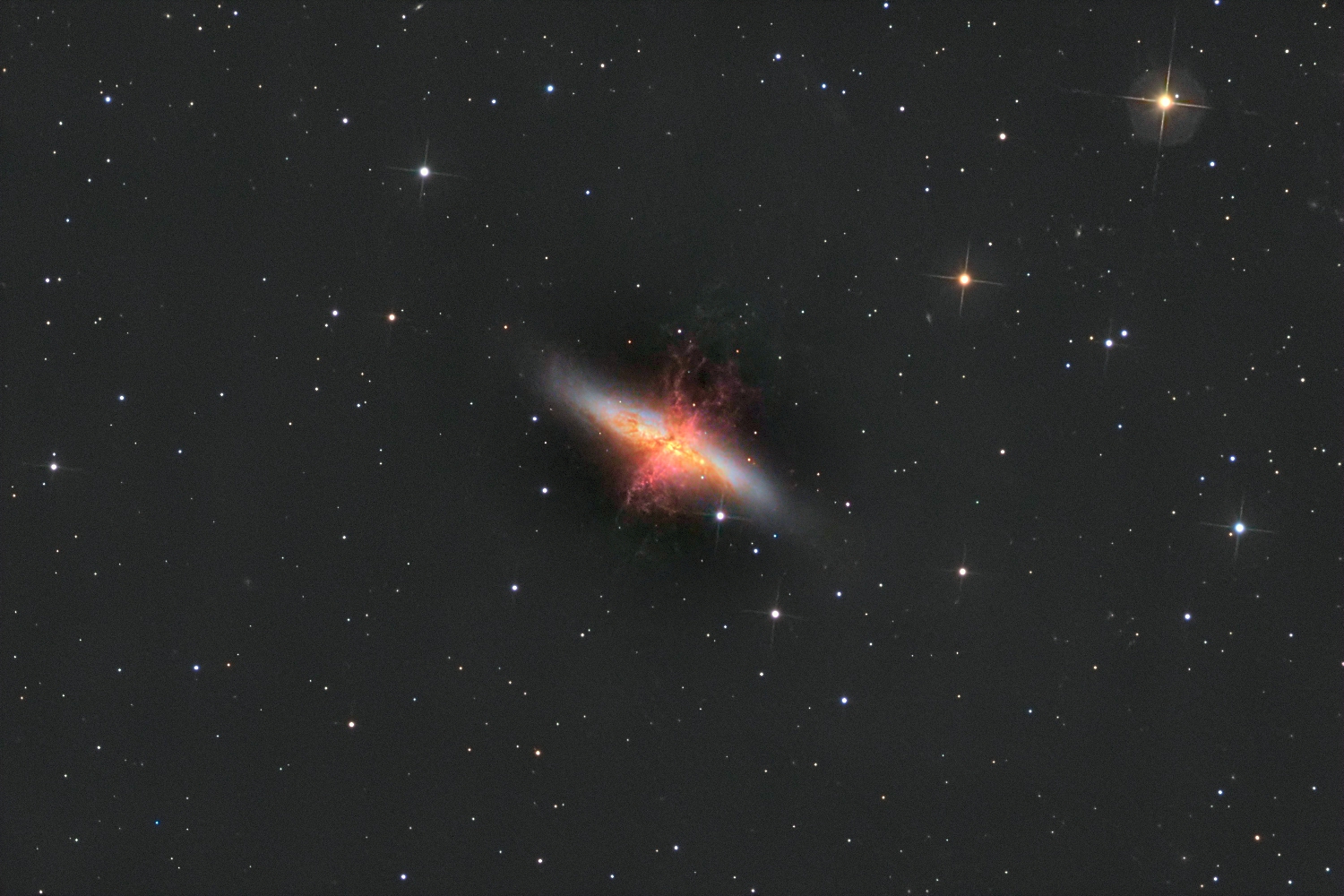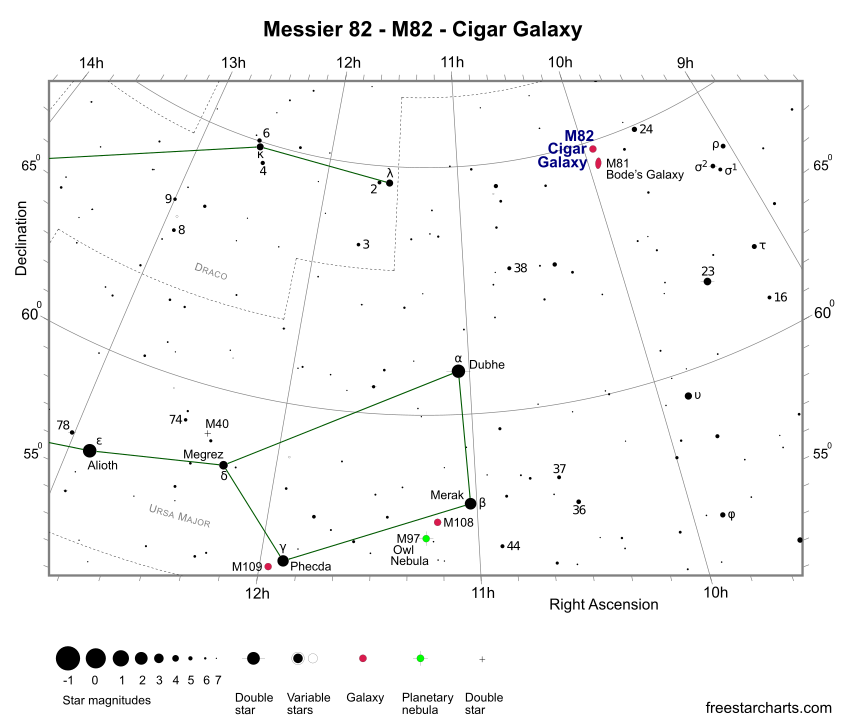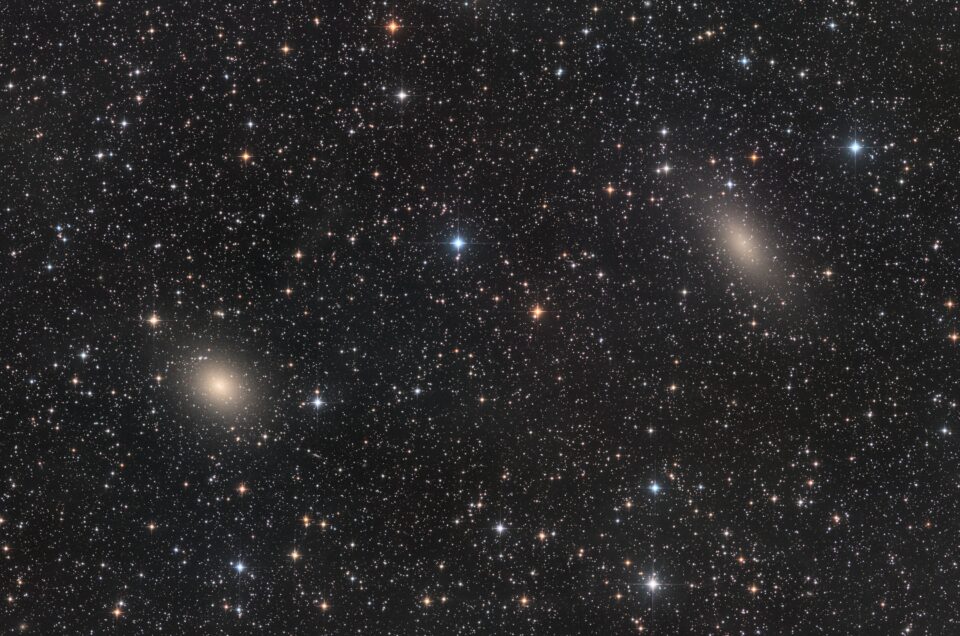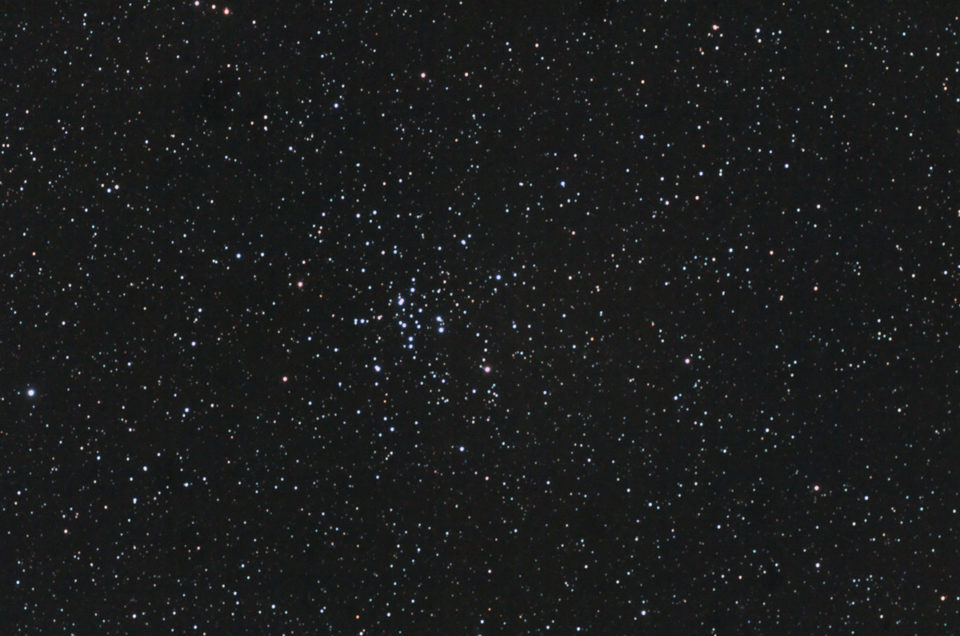Messier 82 (NGC 3034) from my backyard
I imaged Messier 82 (the Cigar Galaxy) twice over the years, each time with a different approach and steadily improving equipment. My first attempt was in 2012, using a DSLR for the color data and an old CCD camera for high-resolution detail through lucky imaging. Despite the limitations of this early setup, the resulting LRGB image turned out remarkably well for the conditions, capturing the galaxy’s turbulent, irregular structure and the prominent dust lanes slicing across its core.
In 2014, equipped with a new CCD camera, I obtained a much deeper H-alpha dataset. These long-exposure narrowband frames revealed the spectacular bipolar outflows—ionized hydrogen jets driven by M82’s intense central starburst—extending far beyond the galactic disk. By integrating this deep H-alpha signal into the 2012 LRGB image, I was able to significantly enhance both the visibility and the spatial extent of these famous “superwind” structures. The combined data showcase M82’s energetic nature, shaped by the vigorous star formation and supernova-driven feedback that make it one of the most dynamic galaxies in the local universe.
Starburst Activity and Extreme Star Formation
M82 is the prototype of a starburst galaxy, a system undergoing a brief but intense episode of star formation. Its central kiloparsec hosts star-formation rates more than 10 times higher than in the Milky Way. Millions of young, massive stars, super star clusters, and dense molecular clouds are packed into a very compact region, creating extreme interstellar conditions.
The energy output from these young stars—combined with frequent supernova explosions—powers a spectacular bipolar galactic superwind. This outflow pushes ionized and dusty material perpendicular to the galaxy’s disk at speeds of hundreds of kilometers per second.
Hα Filaments and Superwind Structure
The superwind is visible most prominently in Hα light, where long, filamentary structures extend far above and below the galaxy. These filaments trace shocked gas driven outward by overlapping supernova remnants and stellar winds. Deep, high-resolution Hα imaging (such as your 2014 CCD dataset) can reveal:
- Fine jet-like structures
- Bubble and shell morphologies
- Faint extensions several kiloparsecs from the disk
- Interactions between hot gas and entrained cooler material
These features make M82 a favorite target for both scientific study and advanced astrophotography.
For the 2014 HαLOSC version the data calibration and registration was performed with DeepSkyStacker and the final processing was done with PixInsight. The result was as follows:

The 2012 LOSC version was done with the same tools, the result was as follows:

The images were taken with the following equipment:
- Date: 2012 / 2014
- Location: Krefeld, Germany
- Telescope: TS 19″ Newton / 10″ Newton ohne Namen
- Focal length [mm]: 1140 / 1000
- Focal ratio: 4.5 / 3.9
- Mount: Losmandy G11 / Skywatcher NEQ6
- Camera: Canon 500Da, Meade DSI2 / Moravian 8300FW
- Filter: OSC:L / Hα
- Exposure time [min]: 270:97 / 300
- Resolution: 1.53″/px (bin2)




Leave a reply